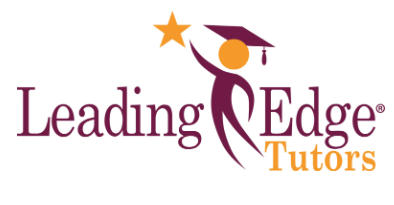
Every child has a unique way of thinking, and one of the most fascinating concepts in understanding learning styles is the idea of the "Right Brain Thinker." Unlike their left-brain counterparts, who are more analytical and detail-oriented, right-brain thinkers tend to be creative, intuitive, and holistic in their approach to problems. In this article, we will explore the characteristics of a right brain thinker and how understanding this thinking style can help you support your child’s development.
What is a Right Brain Thinker?
A right brain thinker is someone whose cognitive processes are more influenced by the right hemisphere of the brain. The right brain is responsible for creative tasks, such as art, music, and emotional expression. People who are right-brain dominant tend to excel in areas that require abstract thinking and imaginative problem-solving.
Right brain thinkers are often described as intuitive, creative, and able to see the bigger picture. They tend to think in images and patterns rather than words and details. For example, a right brain thinker might solve problems by visualizing solutions or using creative methods rather than following a linear, step-by-step approach.
Characteristics of a Right Brain Thinker
Right brain thinkers have distinctive characteristics that set them apart from their left-brain counterparts. These include:
* Creativity and Imagination: Right brain thinkers are naturally drawn to creative pursuits like painting, writing, music, and design. They often see the world in a more artistic or abstract way.
* Intuition and Emotion: Instead of relying solely on logic, right brain thinkers often trust their instincts and emotions when making decisions. They have a strong sense of empathy and are often very in tune with the feelings of others.
* Holistic Thinking: Rather than focusing on individual components, right brain thinkers tend to see the whole picture. They look for connections and patterns between different ideas or concepts.
* Spontaneity and Flexibility: Right brain thinkers are often more flexible and adaptable in their approach to life. They enjoy going with the flow and may resist rigid schedules or structures.
* Visual Learning: Right brain thinkers often learn best through images, charts, and visual aids. They excel in environments where they can use their creativity to express themselves visually.
These traits make right brain thinkers excellent in fields that require innovation, such as the arts, entrepreneurship, and creative problem-solving.
How to Support a Right Brain Thinker in Learning
Understanding that your child may be a right brain thinker is the first step toward helping them thrive. Here are some strategies to support their learning style:
* Encourage Creative Expression: Provide opportunities for your child to express themselves creatively, whether through art, music, writing, or other forms of expression. This not only nurtures their natural abilities but also helps them develop important problem-solving skills.
* Use Visual Learning Aids: Right brain thinkers often grasp concepts better when they are presented visually. Use diagrams, mind maps, videos, and charts to help your child understand and retain information.
* Foster a Flexible Learning Environment: Instead of a strict, regimented routine, allow your child the flexibility to explore different topics at their own pace. Give them the space to experiment with new ideas and approaches to learning.
* Incorporate Hands-On Activities: Engage your child in projects that require creative thinking, such as building models, crafting, or performing experiments. These activities allow right brain thinkers to learn by doing, which reinforces their natural learning style.
* Promote Emotional Intelligence: Since right brain thinkers are often highly in tune with their emotions, encourage them to explore their feelings through journaling, art, or conversation. This will help them develop a deeper understanding of themselves and others.
By tailoring your child's learning environment to their strengths, you can help them achieve academic success while nurturing their natural talents.
Right Brain Thinkers and Academic Success
While right brain thinkers may struggle in traditional classroom settings that emphasize logic and structure, they have unique advantages that can help them excel in various areas of life. In fact, many fields that require innovation, creativity, and out-of-the-box thinking—such as art, design, marketing, and entrepreneurship—are ideal for right-brain thinkers.
However, right brain thinkers can benefit from learning strategies that combine both creativity and logic. For example, teaching them how to organize their ideas creatively through mind mapping or storyboarding can help them communicate their thoughts clearly. Additionally, incorporating hands-on experiences or real-world applications of academic concepts can make learning more engaging for them.
Embracing the Strengths of a Right Brain Thinker
Understanding your child's right-brain thinking style opens up a world of possibilities for supporting their academic and personal growth. By fostering creativity, providing visual learning tools, and creating a flexible environment, you can help your child thrive. Remember, the strengths of a right brain thinker—creativity, intuition, and holistic thinking—are powerful assets that can lead to success in a wide range of fields.
If your child is a right-brain thinker, celebrate their natural talents and provide opportunities for them to flourish. With the right support, they can unlock their full potential and approach challenges with creativity and confidence.
Visit : https://www.leadingedgetutors.com/blog/what-brain-does-your-child-use-left-or-right